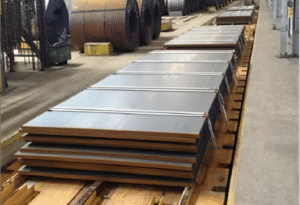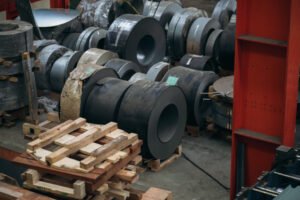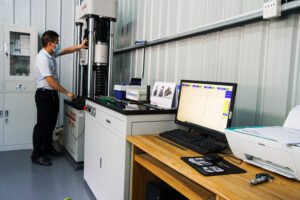Stainless Steel Sheet Chemical Composition Chart: Understanding 200, 300 & 400 Series
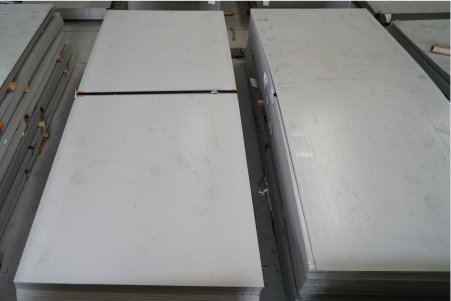
Struggling to choose the right stainless steel for your project? The sheer variety of grades can be overwhelming, leading to costly mistakes if the material doesn't perform as expected. An incorrect choice can result in premature corrosion, structural failure, and budget overruns, damaging your reputation and bottom line.
The primary chemical differences lie in their core alloying elements. The 200 series uses manganese and nitrogen as substitutes for nickel, the 300 series is defined by its high nickel and chromium content, and the 400 series is a simpler iron-chromium alloy with minimal nickel.
I’ve spent years navigating the complexities of the stainless steel market, and I've seen firsthand how a fundamental misunderstanding of chemical composition can derail an entire project. It's not just about picking a grade from a chart; it's about understanding the "why" behind the numbers. This knowledge transforms your material selection from a guess into a strategic decision.
In my role at MFY, I’ve guided countless partners, from engineering contractors in Southeast Asia to equipment integrators in the Middle East. A deep dive into the chemical makeup of these alloys reveals not just their strengths and weaknesses but also their economic implications. It's a fascinating interplay of metallurgy and market dynamics. For instance, the nickel price volatility directly impacts the 300 series, making the 200 and 400 series viable alternatives in specific, non-critical applications. But how do you know when it's safe to make that switch? Let's explore that.
What are the chemical composition differences between the 200, 300, and 400 series stainless steel sheets?
Are you confused by the technical data sheets for stainless steel? The key difference is often hidden in plain sight within the chemical composition. Choosing incorrectly based on a superficial understanding can lead to unexpected material degradation, jeopardizing the integrity of your entire application.
Snippet paragraph: The 200 series substitutes manganese for much of the nickel content, creating an austenitic structure at a lower cost. The 300 series is also austenitic but relies on higher nickel and chromium levels. The 400 series is primarily an iron-chromium alloy, making it ferritic or martensitic.
Understanding these fundamental distinctions is the first step, but it’s only part of the story. In my experience, these differences aren't just academic; they have profound real-world consequences on everything from weldability to corrosion resistance and, ultimately, your project's long-term success. I recall a client, a large-scale kitchen equipment manufacturer in India, who was considering a switch from the 304 grade they traditionally used to a 201 grade to cut costs. On paper, the initial savings were attractive. However, I cautioned them to consider the entire lifecycle. While 201 is excellent for many applications, the high-manganese content makes it more susceptible to certain types of corrosion, especially in environments with specific cleaning agents. We walked through the chemistry, comparing the stabilizing effect of nickel in the 300 series versus manganese in the 200 series. This deep dive into the 'why' behind the composition allowed them to make a strategic choice, ultimately sticking with 304 for surfaces in direct contact with food and using 201 for structural components, optimizing both cost and performance. This is the level of detail we need to explore.
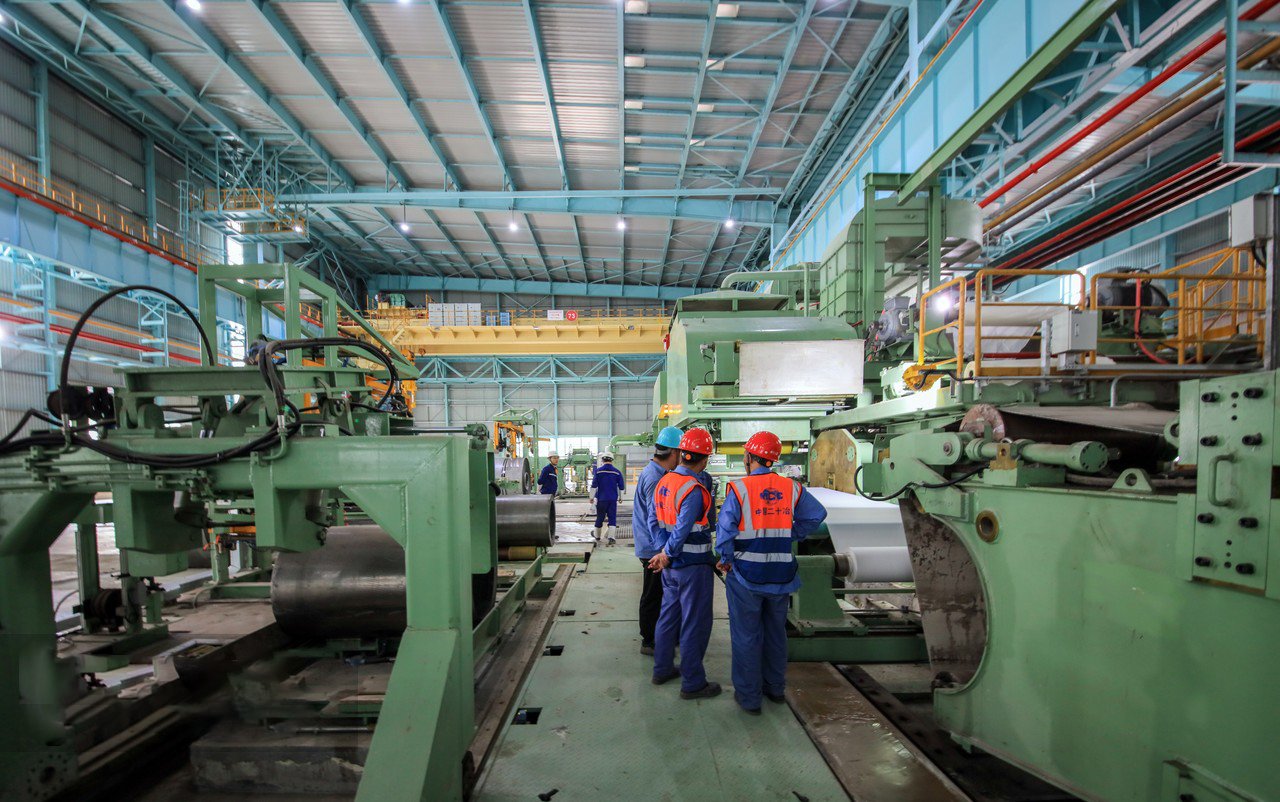
When we dissect the chemical compositions, we're essentially looking at the DNA of the steel. Each element plays a specific role, and their interaction defines the final properties of the material. It’s a delicate balancing act engineered to meet diverse industrial demands. A common mistake I see is focusing solely on chromium content as the indicator for corrosion resistance. While chromium is the star player, its effectiveness is massively influenced by the supporting cast of other elements like nickel, manganese, and molybdenum. This nuanced understanding is what separates a standard material procurer from a strategic supply chain partner. At MFY, we build our client relationships on this deeper knowledge, ensuring the material doesn't just meet a specification but truly serves the application's long-term needs.
The Austenitic Alliance: Nickel vs. Manganese (300 vs. 200 Series)
The defining characteristic of both the 200 and 300 series is their austenitic crystal structure, which makes them non-magnetic and highly formable. The key difference is how they achieve this structure. The 300 series, exemplified by the ubiquitous 304 grade, uses a significant amount of nickel (typically 8-10%) as the primary austenite stabilizer. Nickel provides excellent ductility, toughness, and broad-spectrum corrosion resistance, making the 300 series the industry's workhorse for everything from food processing equipment to architectural panels. In my conversations with engineering contractors, especially those in demanding markets like Russia, the reliability of 304 or 316 in low temperatures and corrosive environments is non-negotiable.
The 200 series was developed as a cost-effective alternative during periods of high nickel prices. Here, metallurgists replaced a substantial portion of the nickel with manganese and nitrogen, which are also austenite formers. A typical 201 grade might have 3.5-5.5% nickel but 5.5-7.5% manganese. While this achieves the desired austenitic structure and offers good mechanical strength—often higher than 304—it comes with trade-offs. According to an MFY internal study on material performance, while 201 steel shows excellent resistance in atmospheric conditions, it is significantly more vulnerable to pitting and crevice corrosion in chloride-rich environments compared to 304.
This distinction is critical. I worked with a construction firm in Southeast Asia that was bidding on a project for coastal balustrades. They were tempted by the lower price of our 200 series coils. However, given the saline environment, I strongly advised them to use 316L from the 300 series. The addition of molybdenum in 316L provides superior chloride resistance, preventing the premature rust staining and structural weakness that the 200 series would have inevitably suffered. The initial cost was higher, but the lifecycle value and avoidance of reputational damage were immeasurable. It’s a classic case of understanding that value is more than just the purchase price.
The Ferritic and Martensitic Realm: The Power of Chromium (400 Series)
The 400 series represents a completely different branch of the stainless steel family. These grades are essentially alloys of iron and chromium, with very little to no nickel. This simple composition means they do not have an austenitic structure. Instead, they are either ferritic (like grade 430) or martensitic (like grade 410), and crucially, they are magnetic. The ferritic grades are known for their good ductility, resistance to stress corrosion cracking, and excellent performance in high-temperature applications involving sulfur. We often supply 430 sheets to manufacturers of automotive exhaust components and heat exchangers for this very reason.
The martensitic grades, on the other hand, are defined by their higher carbon content. This allows them to be hardened and tempered through heat treatment, much like carbon steels. This results in exceptional strength and wear resistance. Grade 410, for example, is a go-to material for manufacturing companies producing cutlery, turbine blades, and industrial valves. The trade-off for this hardness is reduced corrosion resistance compared to the 300 series and lower ductility. Its performance is highly dependent on being properly heat-treated and polished.
A key challenge with the 400 series is weldability, particularly for the martensitic grades. The heating and cooling cycle of welding can create brittle zones in the heat-affected area, requiring careful pre-heating and post-weld heat treatment to prevent cracking. I remember guiding a client who was developing new equipment that required both magnetic properties and moderate corrosion resistance. They were leaning towards a complex, multi-material solution. We analyzed their needs and found that a 430-grade sheet from our inventory met all their requirements in a single, cost-effective material, simplifying their entire production process. It highlighted how a foundational knowledge of these series can unlock elegant engineering solutions.
Comparative Chemical Breakdown: A Data-Driven View
To truly grasp the differences, a direct comparison is invaluable. The table below presents a simplified overview of the typical chemical composition for the most common grades in each series. These percentages are the levers that metallurgists pull to fine-tune the properties of each alloy, striking a balance between cost, corrosion resistance, mechanical strength, and formability. This data isn't just for a certificate of analysis; it's the recipe for performance.
Understanding this table is key to my role as a consultant for our clients. When a distributor from India asks me for the "best" steel, my first question is always about the application. Are they supplying to a coastal region? Will the material be welded? Does it need to withstand high heat? The answers guide us through this table. For general-purpose use with excellent formability, the balanced recipe of 304 is perfect. For a cost-sensitive indoor application, the manganese-heavy 201 is a smart choice. For a hard, wear-resistant part that needs to be magnetic, the high-carbon 410 is the only option.
| Element | 201 (Austenitic) | 304 (Austenitic) | 430 (Ferritic) |
|---|---|---|---|
| Chromium (Cr) | 16.0-18.0% | 18.0-20.0% | 16.0-18.0% |
| Nickel (Ni) | 3.5-5.5% | 8.0-10.5% | <0.75% |
| Manganese (Mn) | 5.5-7.5% | <2.0% | <1.0% |
| Carbon (C) | <0.15% | <0.08% | <0.12% |
The data clearly illustrates the fundamental trade-offs. The 200 series' "nickel-saving" strategy with manganese is evident. The 300 series' commitment to high nickel for superior performance stands out. And the 400 series' lean, chromium-focused composition explains its unique magnetic and mechanical properties. In every business discussion, I use this data not to complicate the conversation, but to clarify it, empowering our clients at MFY to build more efficient and reliable supply chains.
300 series contains high nickelTrue
The 300 series stainless steel is defined by its high nickel content (8-10.5%) combined with chromium, which gives it superior corrosion resistance and ductility.
200 series is magneticFalse
Like the 300 series, the 200 series is austenitic and therefore non-magnetic. Only the 400 series (ferritic/martensitic) stainless steels are magnetic.
How does the chemical composition affect the properties and applications of each stainless steel series?
Have you ever wondered why one stainless steel sheet rusts while another, which looks identical, remains pristine? The answer lies in its hidden chemical makeup. Choosing the wrong composition can lead to catastrophic failures in applications ranging from construction to manufacturing, costing you time and money.
Snippet paragraph: Chemical composition directly dictates the steel's properties. High nickel and chromium in the 300 series stainless steel provide superior corrosion resistance and formability. Manganese in the 200 series offers a lower-cost austenitic option, while the high carbon in martensitic 400 series grades provides exceptional hardness.
These properties aren't just abstract concepts; they translate into tangible performance differences that I see every day. For instance, the superior formability of the 300 series, thanks to its stable austenitic structure fortified by nickel, makes it the prime choice for deep-drawing applications like kitchen sinks or complex automotive parts. Attempting the same process with a 400 series ferritic grade would likely result in cracking. I once collaborated with an equipment integrator in the Middle East who was designing a new line of food processing machinery. They needed a material that was not only resistant to corrosive food acids but also easy to clean and fabricate into intricate shapes. We reviewed their designs and the choice was clear: the 304L grade, with its low carbon variant, offered the perfect blend of corrosion resistance and excellent weldability, preventing carbide precipitation and ensuring the long-term integrity of the welded joints. This is a practical example of how chemistry dictates application, a principle we must delve into more deeply to truly master material selection.
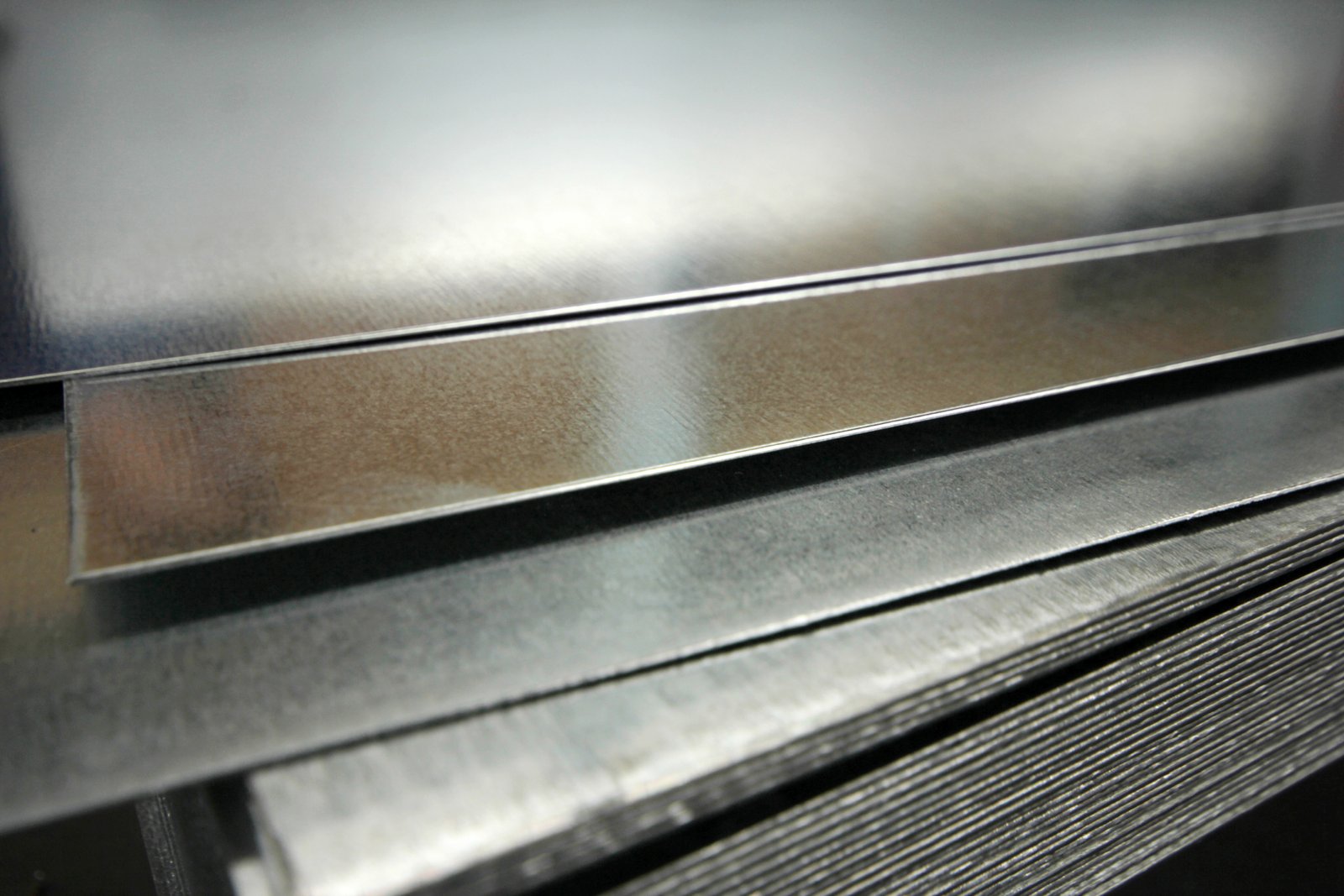
The link between chemical composition and material properties is the bedrock of metallurgical science and, from my perspective at MFY, the foundation of a successful global supply chain. It's a chain of causation: specific elements stabilize certain microscopic crystal structures, and these structures in turn dictate the macroscopic properties we observe, such as strength, magnetism, and resistance to corrosion. For our clients—be they manufacturing companies creating precision parts or construction contractors building long-lasting infrastructure—understanding this link is paramount. It’s the difference between specifying a material that simply works and one that excels, providing a competitive edge through longevity and reliability. Critically analyzing this relationship allows us to move beyond a "one-size-fits-all" approach and into the realm of optimized, application-specific solutions.
Corrosion Resistance: The Chromium-Nickel-Molybdenum Synergy
The primary reason stainless steel is "stainless" is the presence of chromium. When exposed to oxygen, chromium forms a thin, passive, and incredibly stable layer of chromium oxide on the surface. This microscopic layer protects the underlying iron from rusting. Generally, a higher chromium content equates to better general corrosion resistance. Both the 200, 300, and 400 series typically contain at least 16% chromium, providing a good baseline of protection. However, the real-world performance is far more nuanced and depends heavily on other alloying elements, a fact I constantly emphasize to our partners.
Nickel is the key differentiator for the 300 series. It significantly enhances the stability and toughness of the passive layer, especially in acidic environments. This is why grade 304 is a stalwart in the food and beverage industry. But when chlorides (like salt) are present, even 304 can be susceptible to pitting. This is where molybdenum comes in. The addition of 2-3% molybdenum in grade 316 dramatically improves resistance to chloride pitting and crevice corrosion. I always use the case of a client in the marine industry: for them, 316L is not a luxury, but a necessity. The 200 series, with its lower nickel content, and the 400 series, which lacks nickel almost entirely, are far more vulnerable in these specific, aggressive environments. A 2021 study by a leading materials science institute confirmed that in a 5% salt spray test, 316L samples showed virtually no corrosion after 1,000 hours, whereas 201 and 430 samples showed significant pitting within 200 hours.
This data underscores a critical point: corrosion resistance is not a single property but a spectrum of resistances to different chemical attacks. A material that excels in one environment may fail spectacularly in another. A 400 series sheet, for example, might outperform a 300 series in a high-sulfur, high-temperature environment like a furnace lining, but would be a disastrous choice for a chemical storage tank holding chlorides. This level of granular understanding is what prevents costly material failures.
Mechanical Properties: From Formability to Hardness
The chemical composition's influence on the crystal structure directly shapes the mechanical properties of the steel. The austenitic structure of the 200 and 300 series, stabilized by nickel or manganese, results in outstanding ductility and formability. This means the material can be stretched, bent, and drawn into complex shapes without fracturing. The 300 series, with its high nickel content, is the champion of formability, making it ideal for deep-drawn products. The 200 series, while also highly formable, has a higher work-hardening rate due to its nitrogen and manganese content. This means it becomes stronger and harder more quickly during forming, which can be an advantage for strength but requires more powerful machinery.
In stark contrast, the 400 series offers a different set of mechanical virtues. The martensitic grades, such as 410 and 420, have a higher carbon content. This allows them to undergo heat treatment to form a very hard, rigid martensitic structure. Their application is where strength and wear resistance are paramount—think knife blades, surgical instruments, and high-stress industrial components. You simply cannot achieve this level of hardness with an austenitic grade. I recall a client who manufactures cutting tools; for them, the ability of the 420 grade to hold a sharp edge is its single most important property, a direct result of its high-carbon, martensitic chemistry.
The ferritic grades of the 400 series, like 430, offer a middle ground. They are not as formable as the austenitics nor as hard as the martensitics. However, they possess a unique advantage: they are highly resistant to Stress Corrosion Cracking (SCC), a type of failure that can plague austenitic steels in specific environments (typically those with chlorides and high temperatures). This makes 430 a reliable choice for applications like hot water tanks and certain types of heat exchangers, where the risk of SCC is a major design consideration.
Application-Specific Selection: Matching Chemistry to Industry
Ultimately, the goal is to match the unique chemical profile of a series to the specific demands of an application. This is where theory meets practice and where my team at MFY provides the most value. For a manufacturer of high-end cookware destined for global markets, the superior corrosion resistance, aesthetic appeal, and excellent formability of 304 stainless steel sheet is the clear choice. The chemistry guarantees performance and satisfies customer expectations for quality.
For a producer of structural components for indoor environments, such as support brackets or frames for appliances, the 200 series is often a brilliant strategic choice. Here, the extreme corrosion resistance of the 300 series is overkill. The 200 series provides sufficient protection against atmospheric corrosion and the necessary mechanical strength, all at a lower price point due to the substitution of manganese for nickel. This allows our clients to be more competitive without sacrificing product integrity for the intended application. We recently helped a large-scale distributor switch to 201 for their line of indoor shelving, saving them nearly 15% on raw material costs.
Meanwhile, the 400 series serves its own distinct markets. We supply 430 coils to the automotive industry for exhaust systems and decorative trim, where its resistance to high temperatures and moderate corrosion is a perfect fit. We provide hardened 410 plates to engineering contractors who build heavy-duty conveyor systems, where its wear resistance is essential for the equipment's lifespan. The decision-making process is a critical analysis of needs versus properties: Does the application require hardness or formability? Is the primary environmental threat general corrosion, acidity, or chlorides? The answers to these questions are written in the chemical composition chart.
Chromium prevents rustTrue
Chromium forms a passive oxide layer that protects stainless steel from corrosion.
All grades resist chloridesFalse
Only molybdenum-containing grades (like 316) offer good chloride resistance.
What challenges arise in selecting the appropriate stainless steel series for specific applications?
Selecting the right stainless steel feels like a high-stakes decision, doesn't it? The fear of choosing a material that fails prematurely, leading to warranty claims and reputational damage, is a common problem. This indecision often results in over-specifying, costing you money on unnecessary performance.
Snippet paragraph: Key challenges include balancing cost against long-term performance, misunderstanding the specific type of corrosion threat (e.g., general vs. pitting), and being misled by the visual similarity of different grades, which can lead to incorrect material use and premature failure in demanding applications.
The most significant challenge I've observed in my career1 is the temptation of short-term cost savings over long-term value. A purchasing manager might see the lower price per ton of a 200 series coil compared to a 304 and see an easy win. However, they may not be factoring in the potential lifecycle costs if the application is, for example, outdoor architectural paneling in a coastal city. The salt-laden air will inevitably lead to corrosion on the 200 series, requiring costly replacement within a few years, whereas the 304 or 316 would have lasted for decades. This scenario highlights a critical disconnect that often exists between procurement and engineering. One of my primary roles at MFY is to bridge this gap, helping our clients see the total cost of ownership, not just the initial purchase price. It requires a holistic view that considers maintenance, lifespan, and the potential cost of failure, which can dwarf any initial savings.
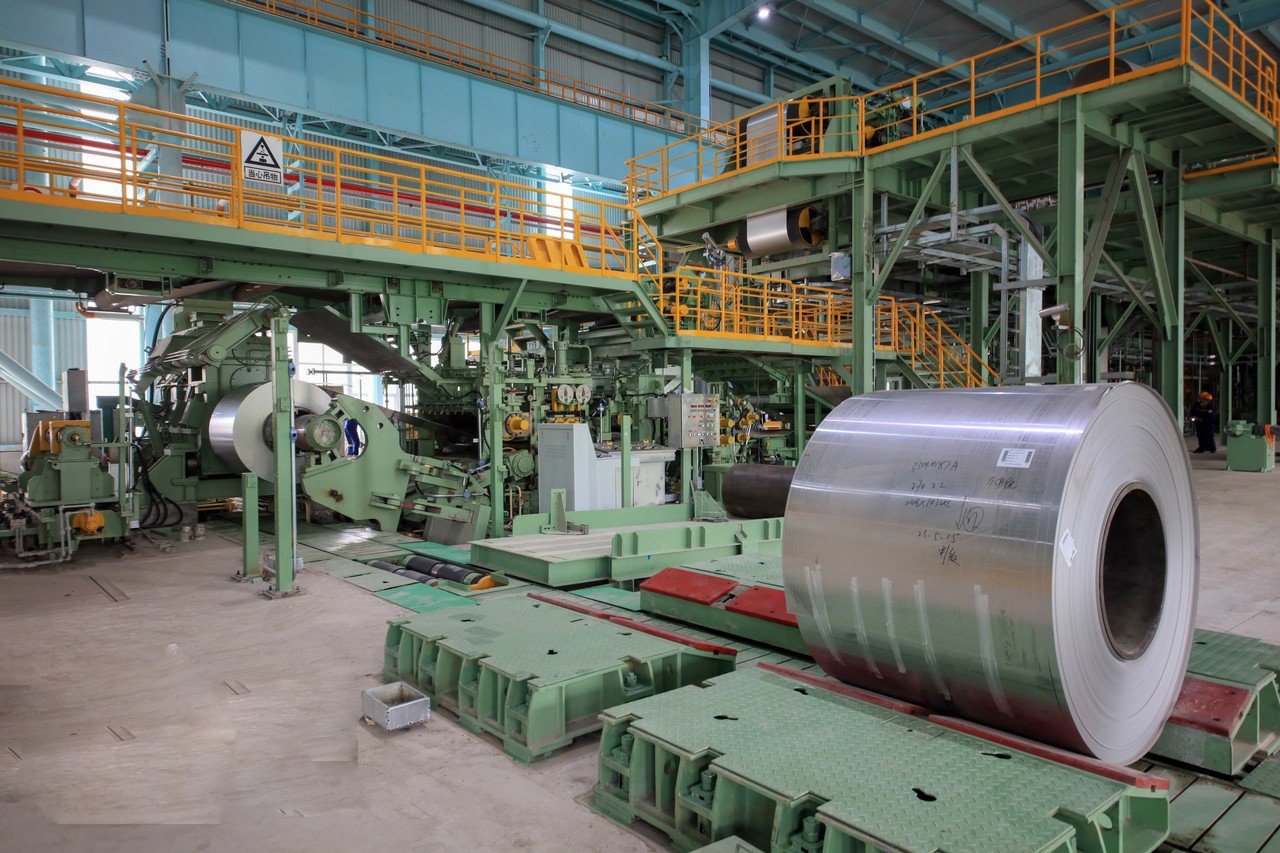
Navigating the selection process is fraught with subtle but significant challenges that can trap even experienced professionals. The core issue often stems from an incomplete understanding of the interplay between the service environment and the material's chemical makeup. It's a multi-variable problem where cost, aesthetics, mechanical demands, and specific corrosive agents all pull in different directions. A critical error is treating "stainless steel2" as a monolithic category. In reality, a 201 and a 316L are as different in performance as a family sedan and an off-road truck. They may look the same when polished, but their capabilities are worlds apart. This visual similarity is a major source of risk in the supply chain, where improper labeling or handling can lead to the wrong material being used in a critical application, a problem we mitigate at MFY with rigorous tracking and quality control.
The Cost vs. Performance Dilemma
The most pervasive challenge is balancing the budget with the required performance. The market price of alloying elements, particularly nickel, creates significant cost differences between the series. The 300 series, rich in nickel, is invariably more expensive than the 200 series (which uses cheaper manganese) and the 400 series (which uses very little nickel). This price pressure can lead to a dangerous temptation: specifying a less-resistant grade to win a bid or reduce upfront manufacturing costs. I've seen this backfire multiple times3. A classic case involved a manufacturer of commercial food counters. They switched from 304 to 430 to lower their costs, assuming the controlled indoor environment would be benign. However, they failed to account for the harsh, chloride-based cleaning agents used. Within months, their customers reported rust spots and pitting, leading to a massive recall and irreparable damage to their brand.
This dilemma requires a shift in perspective from cost to value. At MFY, we work with our clients to perform a lifecycle cost analysis. This involves calculating not just the initial material cost, but also the expected lifespan, maintenance requirements, and the potential cost of failure. For a distributor supplying to the construction industry, providing a certified 316L sheet for a seaside project might have a higher initial price, but it builds a reputation for quality and reliability that secures future business. In contrast, selling a cheaper, inadequate grade might generate a one-time profit but ultimately erodes trust. A 2023 industry report on infrastructure projects found that material failures due to incorrect specification accounted for over 20% of post-construction repair costs, a statistic I often share to highlight the financial wisdom of choosing correctly the first time.
The decision is not always to choose the most expensive option. The challenge lies in identifying the precise point where performance meets requirements without over-engineering. For dry, indoor, structural applications, using a 304 grade is often an unnecessary expense. A 430 or 201 grade would perform perfectly well and deliver significant cost savings. The true skill is in the accurate assessment of the application's needs, a service that transforms a supplier from a mere commodity vendor into a valued partner.
Misinterpretation of Environmental Factors
Another significant challenge is the failure to correctly identify the specific corrosive threats in the service environment. A client might say an application is in a "corrosive environment," but that term is too vague to be useful. Is it a general industrial atmosphere? Is it acidic? Is there exposure to salt? Each of these scenarios calls for a different solution. The biggest culprit I encounter is underestimating the impact of chlorides4. Chlorides are ubiquitous—present in seawater, de-icing salts, and even many cleaning chemicals and food products—and they are the primary enemy of the passive layer on most stainless steels, leading to localized pitting corrosion.
I recall a client who was manufacturing heat exchangers for a chemical processing plant. They knew the process involved acids and specified a 304L grade, which is a solid choice for many acidic environments. However, they were unaware that the process water used for cooling had a high chloride concentration. The combination of heat, stress, and chlorides led to catastrophic stress corrosion cracking within a year. The correct choice would have been a duplex stainless steel or a higher nickel alloy, materials specifically designed to resist SCC. This case illustrates that a partial understanding can be more dangerous than no understanding at all.
To overcome this, we encourage a rigorous environmental audit. This involves asking detailed questions: What is the exact chemical composition of the substances the steel will contact? What is the operating temperature range? Are there mechanical stresses involved? Will the surface be consistently wet or will it have drying cycles? For our engineering and construction contractor clients, we provide checklists and consultation to ensure these factors are thoroughly evaluated. Understanding that 400 series steels are vulnerable to acids, 200 series to chlorides, and 300 series to stress corrosion cracking in specific conditions is fundamental.
Supply Chain Integrity and Material Traceability
A final, critical challenge is ensuring that the material you specify is the material you actually receive. The visual similarity between polished sheets of different grades makes it easy for errors or even deliberate counterfeiting to occur within the supply chain. A less-reputable trader might supply a 201 grade sheet marked as 304 to an unsuspecting buyer, who only discovers the deception when the material begins to fail in service. This is a massive risk for equipment integrators and contractors whose reputation depends on the quality of their finished product.
This challenge is one of traceability and trust. At MFY, we have implemented a fully integrated digital system that tracks our products from the raw material melt to the final processed coil or sheet delivered to the client. Every product comes with a Mill Test Certificate (MTC) that details the precise chemical composition and mechanical properties, verified by our in-house labs. This provides an unbroken chain of custody and guarantees material authenticity. We also educate our clients on how to use simple tools, like handheld X-ray fluorescence (XRF) analyzers, to verify material composition on-site if they have any doubts about their supply.
For distributors and traders, this is a particularly acute issue. They are both buyers and sellers, and their reputation rests on the integrity of their stock. We work closely with our distribution partners in markets like India and Southeast Asia to implement "goods-in" verification procedures. This ensures that the trust we build is passed down the supply chain. The challenge of material integrity is overcome not just with better technology, but with a culture of transparency and a commitment to quality that permeates the entire supply ecosystem.
304 outperforms 200 in coastal areasTrue
300-series stainless steels like 304 have superior chloride resistance compared to 200-series, making them last decades in salt-laden coastal environments.
All stainless steels resist chlorides equallyFalse
Different grades have dramatically different chloride resistance - 200-series fails quickly in chloride exposure while duplex steels excel.
How can understanding chemical composition aid in making informed decisions for material selection?
Are you basing your material choices on old habits or incomplete data? Relying on what's "always been used" can mean you're missing out on more cost-effective or better-performing materials. This can lead to uncompetitive bids and products that are over-engineered and overpriced.
Snippet paragraph: Understanding chemical composition empowers decision-making for material selection It allows for a precise matching of material properties—like corrosion resistance, strength, and formability derived from specific elements—to the exact demands of an application, optimizing both performance and cost.
This knowledge transforms your role from a simple buyer to a strategic decision-maker. It allows you to ask the right questions and challenge assumptions. Instead of just ordering "304 sheet," you can start specifying materials based on the performance characteristics you actually need. I’ve seen this transformation empower our clients. A manufacturing company we partner with used to specify 316L for all their equipment, a safe but expensive choice. After a series of workshops with my team on chemical composition, they learned to analyze their product line application by application. They realized that for 60% of their components, which had no direct contact with corrosive agents, a 304 or even a 430 grade was perfectly sufficient. This deep understanding of chemistry directly translated into a more competitive product line and a smarter, more efficient supply chain. It’s about leveraging knowledge to optimize stainless steel selection5.

An in-depth understanding of chemical composition is the single most powerful tool for demystifying stainless steel selection. It shifts the conversation from a vague comparison of grade numbers to a concrete discussion about elemental properties. When you know that nickel enhances formability and acid resistance, that molybdenum fights chlorides, that manganese is a cost-effective austenite stabilizer, and that carbon adds hardness, you are no longer just picking a product. You are engineering a solution. This level of insight enables you to critically evaluate a material's data sheet and predict its real-world behavior, preventing costly trial-and-error. For the diverse clients MFY serves, from construction contractors to equipment integrators, this knowledge is the foundation for innovation, cost-efficiency, and risk mitigation.
Predictive Performance Analysis
Knowing the chemical recipe allows you to predict how a material will perform under specific conditions. This is a proactive approach to material selection, rather than a reactive one based on past failures. For example, if an engineering contractor is designing a chemical tank, understanding composition allows them to go beyond simply choosing "stainless." They can analyze the intended chemical contents. If the chemical is a strong acid, they know to look for a 300-series grade with high nickel content. If that acid also contains chlorides, their knowledge will immediately point them towards grade 316L, due to its molybdenum content. This predictive capability prevents failure before the first sheet of steel is even cut.
I often walk clients through this predictive process. We start with the service environment and list the primary challenges: temperature, chemical exposure, mechanical stress, etc. Then we look at a composition chart. "For this high-temperature application, we need to ensure the chromium level is high enough to maintain its protective oxide layer," I might explain. "For this part that needs to be welded, we need a low-carbon 'L' grade like 304L to prevent weld decay." This connects the abstract percentages on a certificate to the tangible success of their project. According to a 2022 report by the Materials Performance journal, up to 40% of failures caused by corrosion could be prevented at the design stage through proper material selection—a process that hinges entirely on understanding chemical composition.
This predictive power also extends to fabrication. A high manganese content in a 200-series grade indicates a higher work-hardening rate than a 300-series grade. For a client in manufacturing, this knowledge allows them to predict that they will need more powerful presses or may need to anneal the material between forming stages. This foresight prevents unexpected production delays and tooling damage. It transforms the chemical composition chart from a quality control document into a manufacturing roadmap.
Optimizing Cost and Value Engineering
A nuanced understanding of chemistry is the key to effective value engineering. It allows you to avoid both under-specifying (which leads to failure) and over-specifying (which leads to unnecessary cost). Many companies default to using 304 for almost everything because it's a safe, reliable choice. But "safe" often means "wasteful." If an application is purely decorative and located indoors, away from corrosive agents, why pay the premium for the 8% nickel in 304? A 430 ferritic grade offers excellent polish and sufficient corrosion resistance for this application at a significantly lower cost.
I worked with a large distributor whose clients were primarily in the domestic appliance sector. They were being squeezed on margins because they only stocked 304 coils. We analyzed their sales data and their clients' end-products—washing machine drums, microwave ovens, decorative trim. We demonstrated that for a significant portion of these applications, the magnetic properties of 430 were irrelevant, and its performance was more than adequate. By adding 430 to their inventory and educating their sales team on its benefits, they were able to offer their clients a more cost-effective option, increasing their sales volume and improving their margins. This is value engineering in its purest form, enabled by a deep dive into the chemical makeup of the materials.
This approach empowers our clients to be more competitive. When an engineering contractor can confidently use a 201 grade for internal structural elements while reserving the more expensive 316L for the critical, exposed facades, they can submit a more competitive bid without compromising the integrity of the project. This strategic selection process, rooted in chemistry, is a powerful competitive advantage.
Enhancing Supplier Communication and Quality Control
A firm grasp of chemical composition makes you a more discerning customer and a better partner. When you can speak the language of metallurgy with your supplier, the entire dynamic of the relationship changes. You can ask more precise questions and better interpret the answers. Instead of asking for "good quality" steel, you can ask, "Can you guarantee a molybdenum content of at least 2.1% in this batch of 316L to ensure superior pitting resistance?" This level of specificity ensures you get exactly what you need and signals to your supplier that you are a knowledgeable partner.
This knowledge also serves as your first line of defense in quality control. When a Mill Test Certificate arrives with a shipment, an informed eye can quickly scan the chemical breakdown. Does the chromium, nickel, and manganese content align with the expected values for the specified grade? A discrepancy can be an early warning sign of a quality issue or an incorrect shipment, allowing you to address the problem before the material is integrated into a project. I encourage all our major clients to designate someone on their team to be the "materials champion," and we work to train them to read and understand these certificates.
At MFY, this shared language is the basis of the trust we build. When we discuss an order for stainless steel pipes for a project in a Southeast Asian geothermal plant, the conversation is about ensuring high chromium for high-temperature oxidation resistance and the right balance of nickel for toughness. It's a technical, precise, and collaborative discussion. This deep communication, built on a mutual understanding of chemical composition, is what elevates a simple transaction into a strategic partnership and ensures the entire supply chain, from our mill to the final application, is robust and reliable.
316L contains molybdenumTrue
316L stainless steel contains 2-3% molybdenum, which enhances its resistance to chlorides and acids.
430 is more expensive than 304False
430 ferritic stainless steel is typically less expensive than 304 austenitic steel due to its lower nickel content.
What are the industry recommendations for choosing among the 200, 300, and 400 series?
Faced with a choice between 200, 300, and 400 series stainless steel, do you feel confident you're making the right call? Many industries have established best practices, but ignoring them can lead to non-compliance, premature failure, and significant financial losses.
Snippet paragraph: Industry recommendations are application-driven. The 300 series, particularly 304 and 316, is recommended for food, medical, and corrosive environments. The 400 series is for high-hardness applications or where magnetism is needed. The 200 series is for general-purpose, cost-sensitive structural applications.
These recommendations aren't arbitrary; they are the result of decades of real-world testing, failure analysis, and scientific research. They represent the collective wisdom of entire industries. For example, in the pharmaceutical and food processing industries, standards from organizations like 3-A Sanitary Standards, Inc. are extremely strict. They often mandate the use of 300-series grades like 304L or 316L not just for their corrosion resistance, but also because their smooth, non-porous surface finish is easy to clean and sanitize, preventing bacterial growth. I worked with an equipment integrator building a dairy processing line; there was no debate. The industry standards required 316L for all contact surfaces to handle the chlorides in milk and cleaning solutions. To deviate would be to invite regulatory rejection and compromise public safety. Understanding these established guidelines is the starting point for any responsible material selection process.
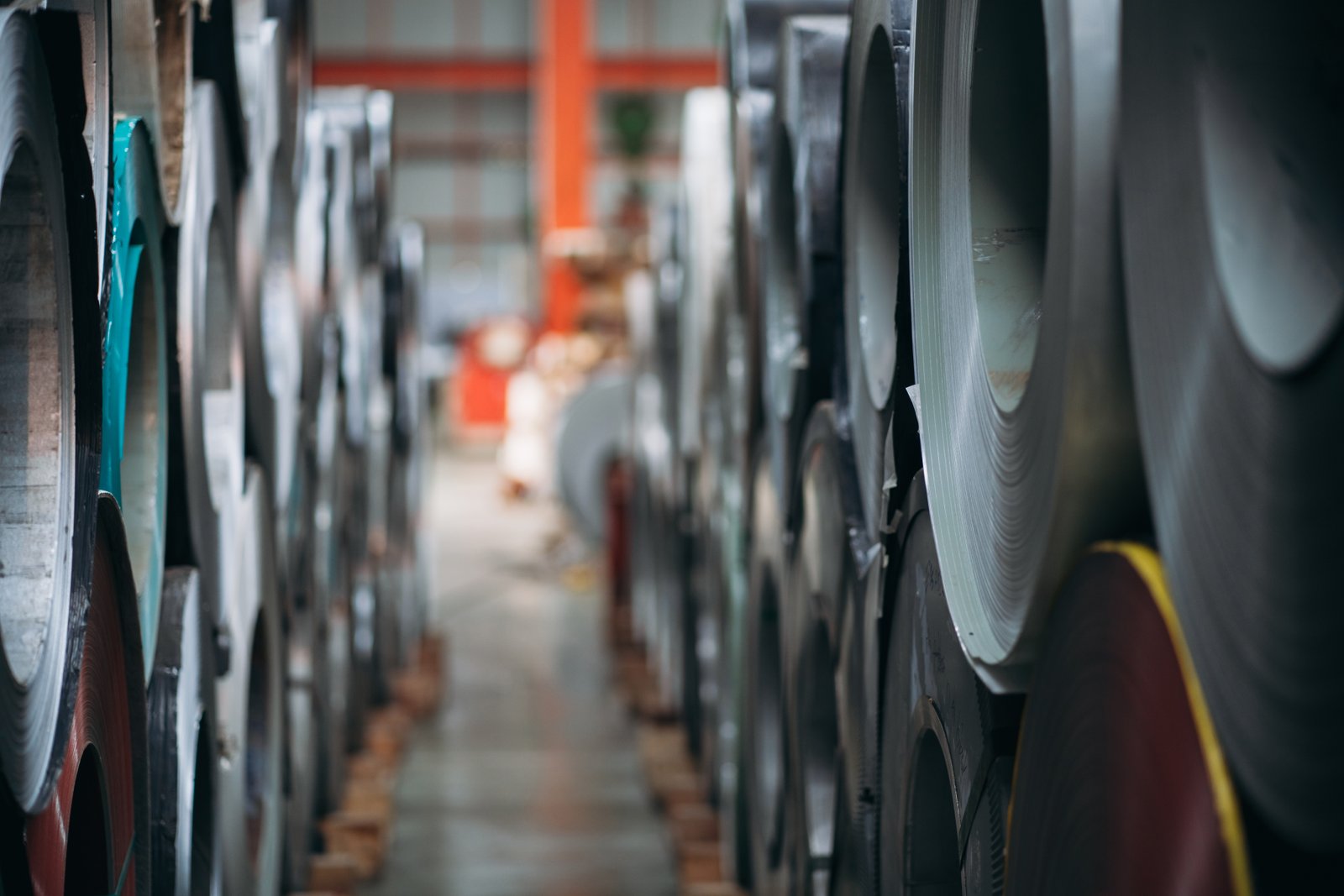
Industry recommendations provide a crucial framework for material selection, acting as a shortcut to safe, reliable, and compliant choices. These guidelines are born from experience, codifying the lessons learned from countless applications and, unfortunately, failures. They distill complex metallurgical principles into actionable advice for engineers, contractors, and manufacturers. However, a critical mind must understand that these are guidelines, not immutable laws. While deviating from them requires expertise and caution, a deeper understanding of the underlying chemical principles can sometimes allow for innovation and optimization. The key is to know the rules so well that you know when and how to safely bend them for a competitive advantage, a philosophy we actively promote with our partners at MFY.
The 300 Series: The Default for Hygiene and Corrosion
Across a vast range of industries, the 300 series is the undisputed champion where hygiene and corrosion resistance are top priorities. In the food and beverage industry, standards are incredibly stringent. Materials must be non-toxic, non-absorbent, and resistant to corrosion from various food products and harsh cleaning agents. This is why grades 304 and 316L are almost universally mandated for surfaces that come into contact with food. The stable austenitic structure, fortified by nickel, ensures no metallic taste is imparted, and the smooth finish achievable on these grades prevents microbial contamination. I always tell my clients in this sector that using anything less is not a cost-saving measure but a gamble with public health and regulatory compliance.
Similarly, in the pharmaceutical and biomedical fields, the recommendation is even more rigid. ASTM F138 is a standard specification for 316L stainless steel for surgical implants. The composition is tightly controlled to ensure biocompatibility and extreme resistance to corrosion from bodily fluids. For pharmaceutical processing equipment, the need for sterility and purity makes 316L the default choice. The 2% molybdenum content provides the necessary defense against chloride-induced corrosion, a common threat from saline solutions and other chemical compounds used in drug manufacturing. My experience with clients supplying to these markets is that the material certificate is as important as the material itself; traceability and proven adherence to standards are non-negotiable.
In architecture and construction, particularly in coastal or heavily polluted industrial areas, the recommendation leans heavily towards the 300 series. While 304 is suitable for many urban environments, 316 is the standard recommendation for applications within a few kilometers of the coast. The iconic Chrysler Building in New York, with its distinctive 302 (an early variant of 304) cladding, stands as a testament to the longevity of the 300 series. For our contractor clients, we stress that following this recommendation is key to building structures that endure, both physically and aesthetically.
The 400 Series: The Choice for Hardness, Wear, and Magnetism
The recommendations for the 400 series are driven by its unique mechanical and physical properties. The primary application for the martensitic grades (e.g., 410, 420) is in any industry that requires high hardness, strength, and wear resistance. In the cutlery and tool manufacturing industry, grade 420 is a standard choice. Its higher carbon content allows it to be heat-treated to a significant hardness, enabling it to hold a sharp edge. It's a simple case of matching the property (hardness) directly to the application (cutting). Similarly, in the manufacturing of turbines, valves, and fasteners, the strength and wear resistance of martensitic grades like 410 make them the recommended material.
The ferritic grades (e.g., 430) are recommended for a different set of applications. In the automotive industry, 430 and similar grades are widely used for exhaust system components. Here, the key requirements are resistance to high-temperature oxidation and corrosion from exhaust gases, combined with good ductility for forming complex pipe shapes. The 300 series would often be overkill and more expensive. Another key recommendation for 430 is in the appliance industry for applications like decorative trim, refrigerator panels, and washing machine drums where magnetism is not an issue. Its bright, reflective finish is highly valued, and its corrosion resistance is more than sufficient for a typical indoor environment. We supply a large volume of 430 coils to this sector, as it provides the perfect balance of aesthetics, performance, and cost for these specific applications.
A critical point I make to our distributor clients is to understand these distinct applications. Trying to sell a 400 series sheet for a chemical tank would be a mistake, but so would be overlooking its value for high-strength or high-temperature applications. The industry recommendations provide a clear map to the correct market for each product in their inventory.
The 200 Series: A Strategic Option for Cost-Sensitive Structural Use
The 200 series is perhaps the most misunderstood, and its recommendations require careful consideration. Due to its lower corrosion resistance compared to the 300 series, it is not recommended for critical applications or for use in outdoor or corrosive environments. Where I have seen it fail is when it has been improperly substituted for 304 in applications for which it was never intended, such as coastal hardware or food preparation surfaces. This has, in some markets, given the 200 series an undeserved reputation for being "low quality."
However, when used correctly, the 200 series is a highly strategic and valuable material. The primary industry recommendation for the 200 series is for indoor, structural, and decorative applications where cost is a major driver. Think of applications like indoor railings, structural support for furniture, appliance casings, and general-purpose tubing for non-pressurized systems. In these environments, it offers sufficient corrosion resistance, higher mechanical strength than 304, and significant cost savings. We have worked with manufacturers of commercial display racks and shelving systems to transition from 304 to 201. The result was a 10-15% reduction in their raw material cost with no discernible difference in performance for the intended application, making their product more competitive.
The key is education. I spend a significant amount of my time with clients in emerging markets like India and Southeast Asia explaining the proper role of the 200 series. It is not a "cheaper 304," but a different material with its own set of strengths and weaknesses. The recommendation is conditional: use it where strength is valued and the environment is benign. By following this guideline, companies can leverage the 200 series to engineer more cost-effective products without compromising on safety or function.
300 series is best for corrosive environmentsTrue
The 300 series, especially 304 and 316, is recommended for food, medical, and corrosive environments due to its superior corrosion resistance.
200 series is suitable for coastal applicationsFalse
The 200 series is not recommended for outdoor or corrosive environments like coastal areas due to its lower corrosion resistance.
Conclusion
Ultimately, understanding the chemical composition of the 200, 300, and 400 series is your greatest asset. It allows you to move beyond generic labels, predict performance, and match the right material to the right application, optimizing both cost and long-term value for your projects.
-
Understand cost implications and performance consequences of choosing cheaper stainless steel options. ↩
-
Learn about the distinct capabilities of various stainless steel grades. ↩
-
Find out how improper grade selection impacts product durability and brand reputation. ↩
-
Discover the effects of chlorides on stainless steel and corrosion risks. ↩
-
Enhance your stainless steel selection process with tailored chemical property knowledge ↩
Have Questions or Need More Information?
Get in touch with us for personalized assistance and expert advice.
